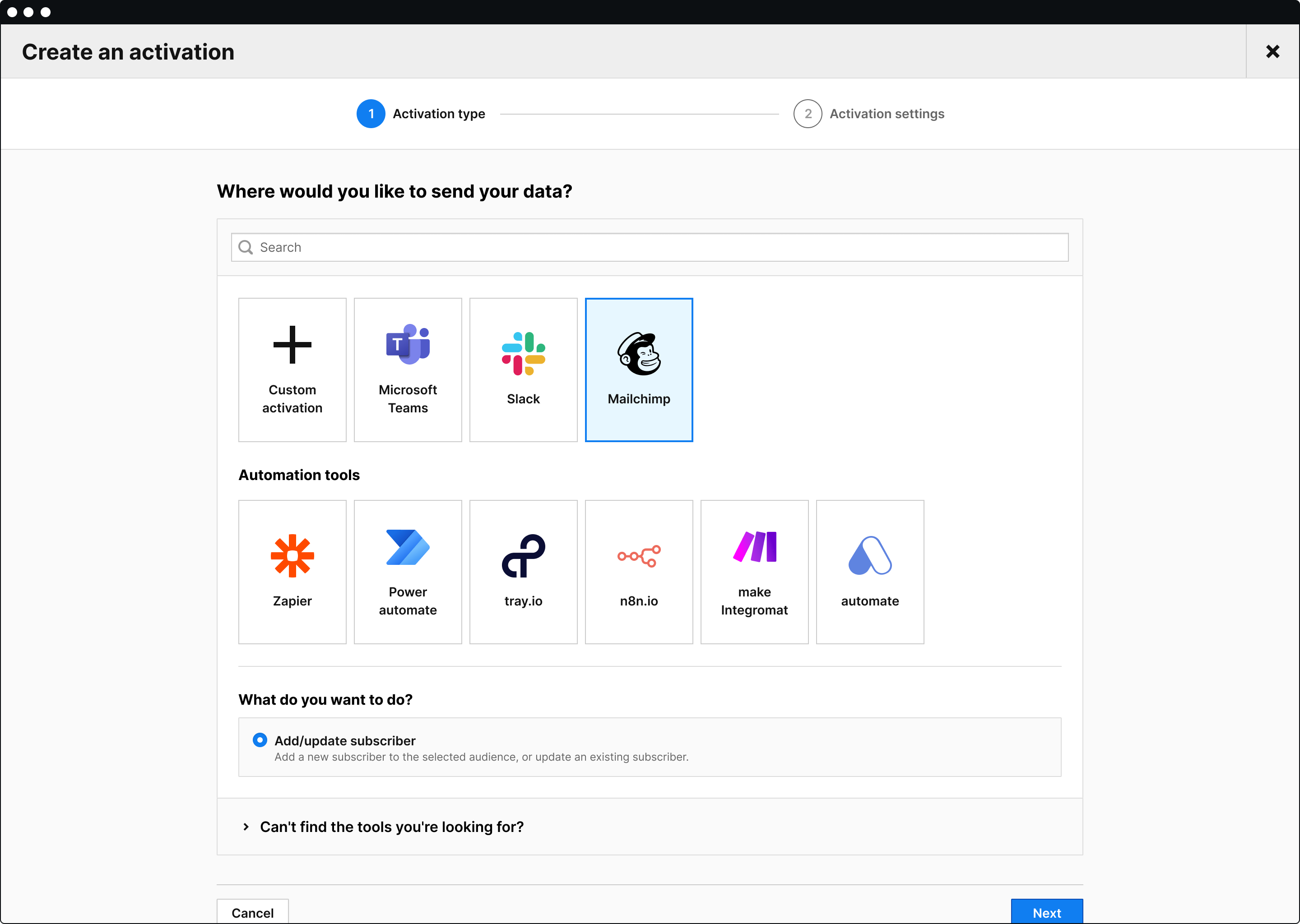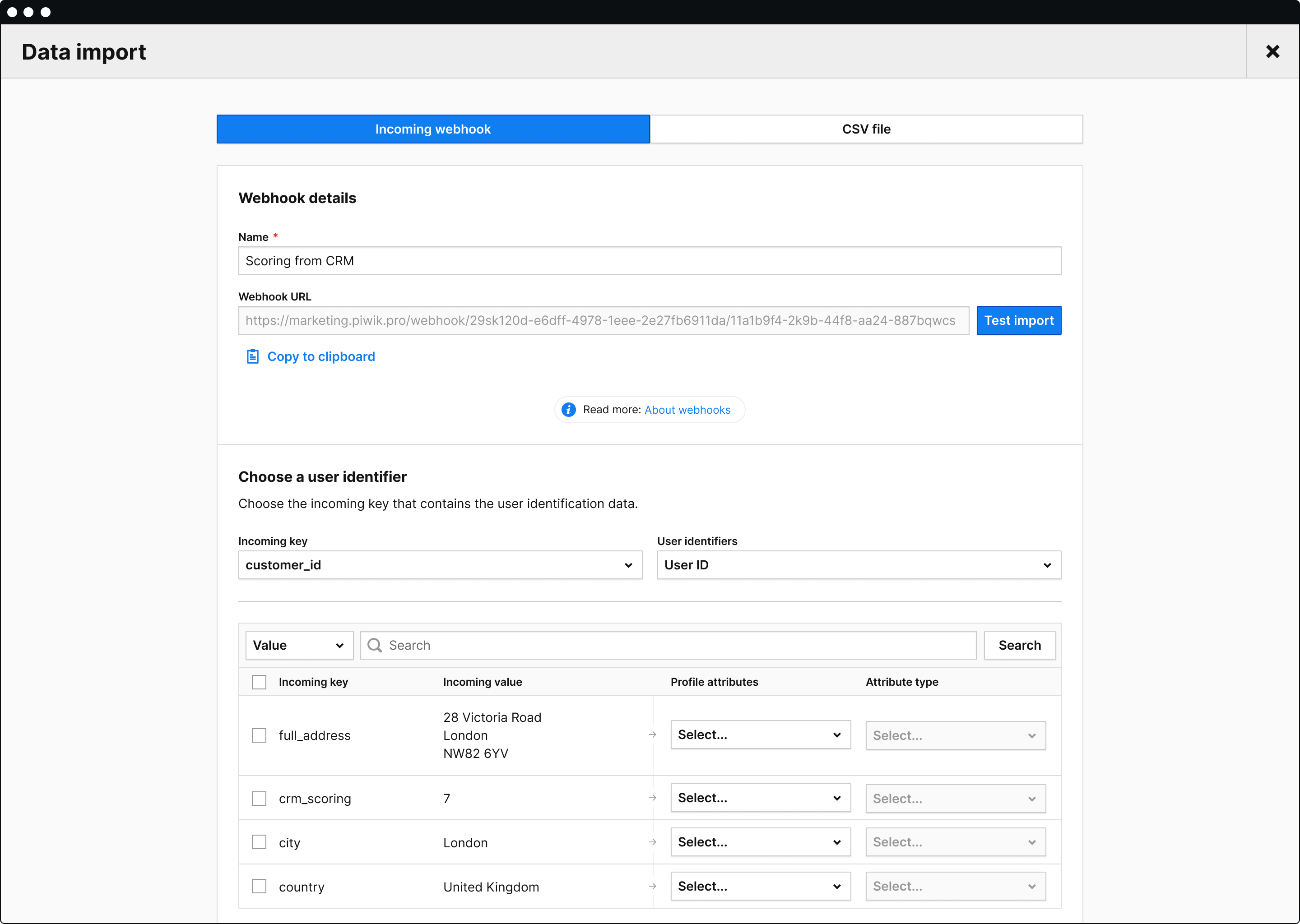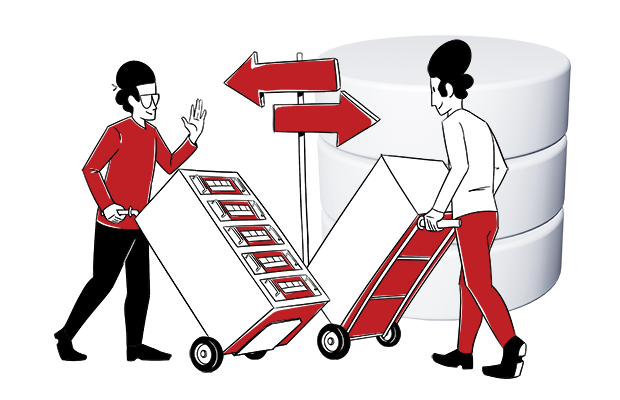A customer data platform (CDP) helps you create a unified, comprehensive view of your customers, enhancing personalization and improving the efficiency and flexibility of marketing campaigns. Accessing and using customer data effectively is crucial for business success and gives marketers a tangible competitive advantage.
There is no place for limited data access and integration. With its robust data activation and import options, CDPs allow you to use a variety of tools from your technology stack, such as CRMs, email marketing tools, ecommerce tools, and ad management software, to gain deeper insights.
This blog post will discuss the benefits of a CDP. Specifically, we will dive into data activation and import in a CDP and give practical examples of how it can help your company.
Why do you need a customer data platform?
Customer data platforms (CDPs) enable businesses to organize, analyze, and activate their customers’ data to improve customer relationships. This alone should make CDPs mandatory for most companies. However, there’s more to it.
Here are a few ways a CDP can help your business:
1. Optimizing customer experience
CDPs let businesses provide a seamless customer experience across all channels. Since all customer data is collected in one place, data-sharing between sales, marketing, customer service, and other teams functions in real-time.
2. Elimination of data silos
CDPs centralize customer information by aggregating data from multiple sources, giving businesses effortless access to online and offline data from every touchpoint. This empowers them to decide which experiences will impact their customers most. Most importantly, it allows for improved decision-making through enhanced and automated data accessibility.
3. Data integration
CDPs offer a distinct edge by seamlessly combining data from multiple sources and tools. You can enrich customer profiles with a wide range of information beyond standard attributes such as location, browser, device, and traffic sources. For example, you may add attributes from external sources such as gender, email, and profession or data about recent web behavior to see users’ interests or activities. This gives you far more insights to drive customer acquisition and retention.
4. Access to complete customer profiles and segmentation
With the help of a CDP, you can effortlessly build in-depth customer profiles that include all the data you’ve gathered, like demographic information, purchase history, behavioral data, etc.
Audiences can be created by segmenting customer profiles based on specified criteria. Additionally, streamlining audience segmentation with a CDP reduces the time spent creating target groups and guarantees that the segments remain uniform and current across all systems.
5. Using first-party data
When most browsers abandoned third-party cookies, first-party data became the future of digital marketing. First-party data allows marketers to rely solely on the data they collect and have consent for. With CDPs, marketers can collect and unify first-party data.
You can keep your clients’ data safe as the customer data platform helps you respect users’ right to privacy because you are more likely to obtain valid consent by asking users directly. As a result, CDP can help you meet the demands of GDPR, TTDSG/TDDDG, CPPA, CPRA, LGDP, and other privacy laws worldwide. Moreover, first-party data is more relevant and reliable than second- or third-party data.
Our Core plan now also includes Customer Data Platform. Start using it today:
What can you achieve with a customer data platform
CDPs offer more than data collection – they are essential for effectively acting on data. This information lets you make wiser business decisions and maintain a competitive edge.
Discover why a CDP is integral to a successful digital strategy and what you can gain.
1. Understand your customers better
A CDP helps you gather and use customer data from various channels and devices, revealing valuable patterns and trends in customer behavior.
Moreover, with a CDP, you can use web behavioral data before you connect it to other systems and platforms, which is powerful on its own. It allows you to look at a visitor’s behavior over time rather than just during one visit.
Finally, you can use a CDP to monitor how often customers visit your website, how much time they spend on different pages, and what actions they take. By employing a CDP, you can quickly make use of the information and act upon it. For example, demographic information enables you to adapt messaging for users from different countries.
2. Predict customer needs and build personalized experiences
Segmenting customers based on their profile characteristics, behaviors, and interests allows you to customize your marketing strategies to match their preferences, ensuring they receive personalized product recommendations and messages.
For example, after creating audience segments in your CDP, you can pass them on to other tools in your growth stack for data activation. Then, you can choose specific audience members that match certain conditions and send them a special discount on a product they searched for.
3. Develop targeted marketing campaigns
With complete customer profiles and segmentation, you can implement highly personalized marketing campaigns across all customer engagement areas. CDP marketing can enhance strategies like social media promotions, targeted ads, and SEO efforts.
4. Use performance metrics to enhance customer lifetime value
A CDP allows you to boost customer retention and lifetime value. As an illustration, suppose your faithful customer has not visited your website in a while. In that case, you can reach out to them (via email, app, or phone) and motivate them to return and browse your website again.
5. Automate processes to save time and money
A CDP enables defining audiences and segments and automating the process of activating them. To ensure efficient data management with a CDP, some setup is necessary initially, but it will require minimal maintenance afterward. Automation is a cost-effective, time-saving solution that streamlines processes and decreases the likelihood of mistakes.
6. Integrate data from disparate sources to activate your target audiences
A CDP allows for a unified and comprehensive view of the data, enabling you to activate it. This is especially crucial in the face of third-party cookies’ deprecation. Moreover, it strongly supports data management processes. Without a customer data platform, your data will be scattered and divided, significantly reducing its usefulness for customer analytics.
7. Enhance customer support
A CDP can help you improve customer support. You could create audiences based on specific website behavior and tailor support team activities accordingly. For example, you can create a backlog for the customer success team to collect user feedback. In communication with customers, account managers can reference:
- What product the customer purchased.
- The channel it was purchased through.
- Previous interactions with the company.
This approach enables them to respond to customers in a personalized manner, leading to faster ticket closures and a boost in customer retention.
8. Strengthen data privacy
Simplify managing customer consents and increase data privacy and GDPR adherence without the burden of manual work. Each activation can rely on customer consent to ensure that data is always used within its limits.
A CDP may not fulfill all regulatory demands by default, but having a centralized approach to customer data is critical to maintaining compliance.
Data activation and import
Data in and data out involves working on customer data to convert it into insights and actions, and it’s vital to unlocking all of a CDP’s benefits. Thanks to data activation and import, you may send customer data from any source and forward it to any other tool in your tech stack using webhooks.
Easy data import and activation from numerous sources allows you to create rich audiences and single customer views (SCV). The SCV may include personal details, communication methods, buying patterns and loyalty program participation, online interactions, and past interactions.
An SCV provides a panoramic view of your customer interactions, equipping you with valuable knowledge to shape marketing plans based on their identity, preferences, and potential for deeper engagement with your brand.
Get more details in our blog post: Single customer view (SCV): what is it and how does it work?
Thanks to data in and data out, you can find further uses for the stored information. For example, you can send the data to sales tools to improve your interactions with current and prospective customers, or it can be imported to enrich CDP user profiles. With data import, you can quickly and automatically bring in data from various sources, such as your CRM, ecommerce platform, data warehouse, and more.
Designed with privacy in mind, Piwik PRO’s CDP enables marketers to unlock the full potential of their activities. You can create complete customer profiles and segment your data into audiences. Activate and import them to provide a personalized experience and run effective campaigns across channels. Piwik PRO’s CDP capabilities serve multiple use cases.
Data activation use cases
A CDP lets you activate data by sending selected, most relevant user data to thousands of destinations. Audience activation can be automated on almost any platform using webhooks. If not available, you can easily link any platform through intermediary workflow automation tools such as Power Automate or Zapier. Examples of other platforms you may use for data activation include Hubspot, Slack, Mailchimp, Google Ads, Shopify, and Marketo.
Data activation allows for unlocking valuable insights and applying them to your company’s processes.
Example use cases:
- Encourage undecided shoppers to buy from you. For this purpose, you can add your audience members to any marketing automation tool you like and send them a discount coupon or information about your fast delivery. This can bring in more customers and increase your sales.
- Improve operational efficiency by assigning account managers to high-value customers. Activate data and send a notification to the sales team to contact the customer. For example, they may receive automated messages via Slack or Microsoft Teams when prospects visit key pages like pricing, unfinished checkouts, or warranty pages. It ensures your sales team is instantly informed, seizing the perfect moment to connect with hot prospects.
This can increase customer satisfaction and trust. It’ll also save you time otherwise spent manually inputting your audience’s information and verifying its correctness.
- Develop targeted marketing campaigns by displaying banners to customers with the propensity to buy (hot leads), excluding people who have already bought your product to prevent wasting ad budget. For instance, you can target customers who visited the site for the first time through a campaign and browsed product pages or visited a pricing page. The activation involves adding the customer’s email to Custom audiences on Facebook Ads and Google Ads.
This can optimize remarketing spending and help focus your resources on prospects most likely to purchase from you.

Data import use cases
You can import data from your CRM, ecommerce platform, data warehouse, and other tools into the CDP and use it to enrich and update profile data in real-time. This helps ensure that your CDP profiles have relevant information and are up to date. You can apply the customer data to audiences and activations to combine the data gathered across touchpoints.
Furthermore, if you integrate your CDP with analytics and a tag manager, you can benefit from a steady stream of valuable user data. You can also connect siloed data sources into clear records that map all user traits and behaviors.
Example use cases:
- Send data on offline purchases from retail stores or points of sale. Importing offline conversions is integral in analyzing customer journeys, sales sources, and ROI, and effectively reporting on multiple touchpoints within numerous funnels.
- Import customer lifetime value (CLV) and customer scoring from CRM. It’s one thing to measure customer profit, but game-changing companies take customer lifetime value a step further. With CLV import, you get to tap into the power of CDPs to unlock advanced analysis, actionable insights, and predictive capabilities that allow you to understand customer desires.
- Ingest data from your email campaigns into the CDP and merge the data into existing customer profiles. For example, you can send information about opened emails to Piwik PRO CDP from email automation software. By incorporating data from email automation tools, you can better understand customer engagement, enabling well-defined audience segmentation.

If you are a more advanced user, Piwik PRO also allows you to import data from other tools using the API. This option lets you improve your customer profiles by accessing critical information from external sources and better understanding their preferences and behaviors.
Additionally, you can create custom attributes through the user interface and API.
If you want to learn more, visit our developer docs and guides.
What should you look for in a customer data platform?
To get the most benefit from it, your CDP should have such features as:
- Data integration: An optimal CDP should be able to integrate data from various sources. Examples include web analytics, CRM systems, email marketing tools, social media platforms, and other sources. Review what tools you need to integrate with the CDP and whether your chosen CDP allows you to do it.
- Integrated analytics and tag manager: A CDP that natively offers analytics and tag management provides even more comprehensive insights. Native integrations offer seamless connections between tools and lower entry barriers for end users.
- Data activation and personalization: Make sure CDPs can deliver a personalized experience across channels and activate data to reach the right people at the right time. This involves enriching user profiles with attributes specific to your business and customers.
- Powerful analytics capabilities like behavioral segmentation and audience building: Select a CDP to trigger audiences across multiple touchpoints, including real-time customer interactions. Platforms should allow segmentation using demographic and behavioral data to define audiences more precisely.
- Scalable and secure data storage: The system needs to manage increasing amounts of data and support a growing user base as the business expands. It should also be able to seamlessly and securely integrate with new data sources and systems.
- Flexibility and easy setup: All stakeholders in the company should have access to the information, from marketing and sales to customer service and product development. Non-technical team members can navigate and understand it easily with a user-friendly interface.
- Support: Leading CDP vendors offer comprehensive professional services and customer support, including implementation, onboarding, product training, analytics consulting, and custom integrations.
CDP that suits your needs
A unique feature of Piwik PRO’s CDP is that it integrates with a web and app analytics platform rather than aiming to replace it like most other CDPs on the market. The native integration with Analytics and Tag Manager ensures a steady supply of crucial user data, facilitating a deeper understanding of insights.
With Piwik PRO’s CDP, you can effortlessly activate data by utilizing webhooks and automation tools to send desired attributes to various destinations, such as CRM, ad platforms, email marketing tools, internal communication channels, etc. Plus, the intuitive editor and templates allow you to create activations without needing the help of tech teams, and you can also define advanced integrations if required. Our CDP allows you to further enhance your insights with secure data imports from any tool from your tech stack.
Moreover, Piwik PRO’s CDP prioritizes user privacy and helps you comply with global privacy laws like GDPR, TTDSG/TDDDG, CPPA, CPRA, and LGPD. This includes safe hosting options, data governance, and built-in integration with consent management tools.
Learn more about the capabilities of the Piwik PRO CDP:
If you want to see our CDP in action, contact us for a personalized product demo.












